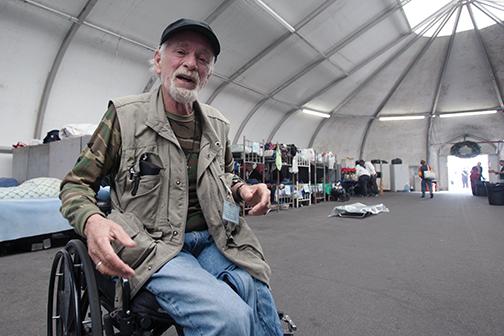Underneath the clear skies, sunshine and beautiful beaches lies a deeper issue in paradise—San Diego’s homeless population. More than 8,800 people in San Diego are homeless, according to the WeALLCount Campaign, a part of the Regional Task Force on the Homeless. The city is recognized for having the third largest homeless population, following New York and Los Angeles, according to the U.S. Department of Housing and Urban Development.
Although the homeless population has decreased since last year, city officials have sought ways to continue lowering the numbers. Former Mayor Bob Filner assured the city’s winter shelters that he would appropriate funds to keep them open on a year-round schedule instead of the usual four-month season. The San Diego Housing Commission has estimated the total expense at nearly one million dollars to extend the shelters past April permanently. Now, city residents are unsure how the former mayor’s promise will follow through.
Shelter advocates believe keeping the winter shelters open for a longer duration would allow the homeless to stabilize as they attempt to get back on their feet.
“The point of these shelters is to help those who want assistance get connected with a program that can help them,” San Diego State Honors Council member and Vice President for Phi Kappa Phi Tanya Bauman said. “None of this will be possible if the shelters shut down.”
Ultimately, the issue is funding. Council members have not yet decided how they plan to tackle the decision. Interim Mayor Todd Gloria said Filner underestimated the funds before making promises.
President and CEO of Alpha Project Bob McElroy said it’s more cost effective to provide yearlong shelters for the homeless population.
“It’s far less expensive to have people inside the shelter than outside on the street,” McElroy said. “It’s a tremendous tax saving.”
The services offered at Alpha Project, a local organization that provides homeless services, include supplying meals and personal hygiene supplies, case management, medical and counseling services and employment and housing assistance. The medical services lessen the strain on taxpayers because they don’t have to pay for health clinic bills for the homeless, McElroy said.
Last year, one-third of San Diego County residents lived in economic hardship and fell at or below the poverty line, according to the Center on Policy Initiatives. In other words, many people still depend on government services to help them.
“It is a quality of life issue and is a real problem in some neighborhoods,” SDSU social work professor Loring Jones said. “We have a responsibility to do something about this issue.”
Various campus clubs and organizations offer community service opportunities to assist homeless shelters.
The annual Alpha Project Drive for the Homeless is a charity drive founded by SDSU graduate student Vice President of Phi Kappa Phi Honor Society and Honors Council member Aladdin Shadyab. More than 10,000 donations have been collected throughout the past four years to Alpha Project, including blankets, hygiene items, stuffed animals, food and socks.
As the future of the city’s winter shelters remains in limbo, only time will determine how city officials plan to fulfill Filner’s promise. For now, Alpha Project’s winter shelter will close April 1, 2014.
Staff Photo







